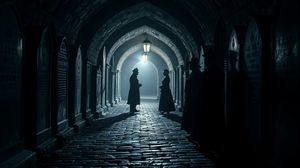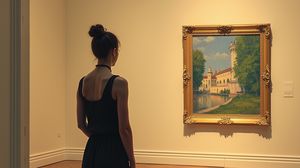
In the heart of London's historical fabric lies the intriguing site known as the "(Not So) Roman Baths" on Strand Lane. Despite their name, these baths are not remnants from the Roman era but rather a curious example of 17th-century architectural misinterpretation. Originally built around 1612, they were likely constructed as a cistern for a fountain in Somerset House, a detail that adds a layer of complexity to their misunderstood origins.
The baths gained their misleading moniker due to a popular Victorian misconception. During the 19th century, the notion that these baths were Roman gained traction, attracting visitors eager to experience a tangible connection to ancient Rome within the bustling city of London. This romantic yet inaccurate association has persisted, lending the site a unique allure.
Notably, Charles Dickens mentioned the Strand Lane Baths in his literary works, shedding light on its continued cultural impact throughout the years. The reference in Dickens' writings adds to the site's peculiar charm, blending historical curiosity with literary significance, making it a point of interest for both history enthusiasts and literature lovers.
The physical structure of the baths presents an evocative glimpse into London's past. Tucked away and easy to miss, the subterranean structure features vaulting and brickwork indicative of the Jacobean period. The atmospheric setting and the sound of trickling water create an experience that transports visitors back in time, far removed from the modern metropolis above.
Today, the Strand Lane Baths are part of the collections overseen by King's College London and can be visited by appointment. Their somewhat hidden nature adds a layer of exclusivity to the visit, making it a hidden gem for those looking to explore London's quainter, lesser-known historical sites.

Making the Most of Your Visit:
When you visit the "(Not So) Roman Baths," take a moment to appreciate the unique mix of architecture. Pay close attention to the brickwork and vaulted ceilings typical of the early 17th century. This isn't what you'd expect from a "Roman" site; the style here is distinctly Jacobean.
Explore the site with the idea of stepping back in time. Imagine the bath's original purpose as a cistern for Somerset House's fountain. This context adds a richer understanding of its design that a casual glance might miss.
Bring along a copy of Dickens' work that references the baths—a passage from 'David Copperfield' might do the trick. It's a fun way to connect a piece of literature to your actual experience. Plus, it adds another layer of intrigue knowing Dickens himself found inspiration here.
Listen carefully; the sound of water trickling through the baths is one of its most atmospheric features. It's a quiet, calming experience right in the hustle and bustle of London, transporting you back to a truly different era.
Plan your visit with its hidden location in mind. These baths are tucked away and easy to fall off a tourist's radar, but that's part of their charm. Approach the experience like uncovering a secret slice of London's history meant just for you.

Visiting Times & Costs:
The "(Not So) Roman Baths" on Strand Lane are open to visitors by appointment only, making it important for potential visitors to plan ahead. Access to the site is managed by King's College London, adding an air of exclusivity to the experience.
Opening Times:
- Visits are by appointment only, so check in advance for availability.
Cost:
- There is no entrance fee, making it a cost-free attraction for those intrigued by its history.
Accessibility:
- Due to its historical structure, the baths may not be easily accessible for visitors with mobility issues. The site features narrow passages and steps, which might be challenging for some guests.

Address & Map:

Nearby:























